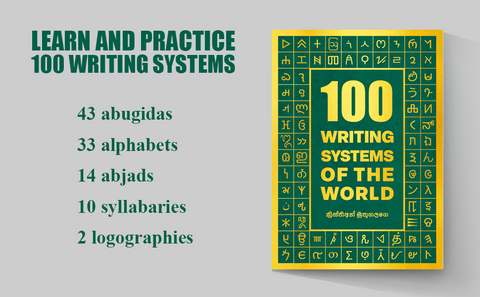Unraveling the Mystique of the Limbu Script: A Journey into the Heart of Limbu Cultural Heritage

Script type: The Limbu script is an abugida, characterized by its consonant-vowel combination symbols. Each symbol represents a consonant sound with an inherent vowel sound, and additional diacritic marks modify the vowel to create different syllables.
Writing direction: Traditionally, the Limbu script is written from left to right, with each syllable forming a unit. However, it can also be written vertically in certain contexts.
Creator and invention time: The Limbu script is attributed to Thikúng Men Salóng, the same creator as the Lepcha script, and it is believed to have been developed in the 17th century. Thikúng Men Salóng, a revered figure in Limbu culture, played a crucial role in shaping the script's form and usage. However there are also sources attributing the script to prince Chakdor Namgyal of Sikkim.
Time period of use: The Limbu script has been in continuous use for centuries, preserving Limbu folklore, religious texts, cultural knowledge, and everyday communication. It has stood the test of time as a testament to the rich heritage of the Limbu people.
Population and current usage: The Limbu script is actively used by the Limbu community, an indigenous group residing in various regions of Nepal, India (Darjeeling and Sikkim), Bhutan, and other parts of the Himalayan region. The Limbu community takes pride in their script, using it in daily life, ceremonies, and cultural events.
Usage area: Geographically, the Limbu script is widely used in areas where the Limbu community is concentrated. It holds significant cultural value and is recognized as a symbol of linguistic identity in regions such as eastern Nepal, Sikkim, Darjeeling, and other Himalayan foothill areas.
Languages associated with the script: The Limbu script is used primarily to write the Limbu language, a Tibeto-Burman language with a rich oral tradition. It has also been adapted for other languages spoken by the Limbu community, such as Yakkha, Kulung, and others.
Interesting Facts:
- Script evolution: Over time, the Limbu script has undergone subtle changes and variations. Different regions and generations have adapted the script to suit their needs, resulting in distinct local styles of writing.
- Cultural revival: The Limbu script plays a vital role in preserving Limbu culture and heritage. Cultural organizations and educational institutions are actively working to promote its usage and ensure its survival.
- Ritual and tradition: The Limbu script is an integral part of Limbu religious rituals, such as the Sakela dance and Mundhum religious ceremonies. It is also used in various life-cycle events and traditional festivities.
- Endangered status: Despite its cultural significance, the Limbu script faces challenges due to the dominance of Nepali and English in official and educational settings. The script's preservation efforts are essential to safeguarding its continuity.
- Script aesthetics: The Limbu script's elegant and flowing characters add a distinctive charm to traditional handwritten texts, showcasing the artistry of the Limbu people in preserving their cultural legacy.
The Limbu script stands as a living testament to the profound cultural heritage of the Limbu community. Its use as a repository of knowledge, customs, and traditions is a testament to the enduring spirit of a people committed to celebrating and preserving their linguistic identity amidst a rapidly changing world. As we delve into the enchanting world of the Limbu script, we discover not just a writing system but an embodiment of cultural pride and resilience.

Practice Limbu and other scripts with our book "100 Writing Systems of the World"!
Discover 100 diverse writing systems from around the globe in one captivating book. Practice writing different scripts with full character charts and essential information provided. Let your imagination soar on the blank right pages as you explore 43 abugidas, 33 alphabets, 14 abjads, 10 syllabaries, and 2 logographic scripts. Dive into numeral systems and even design your own writing system. Immerse yourself in the beauty and diversity of global scripts today with "100 Writing Systems of the World." Unleash your creativity and order now!